Submerged: Life under the waves on the HMS Courageous, the Preston-affiliated nuclear submarine
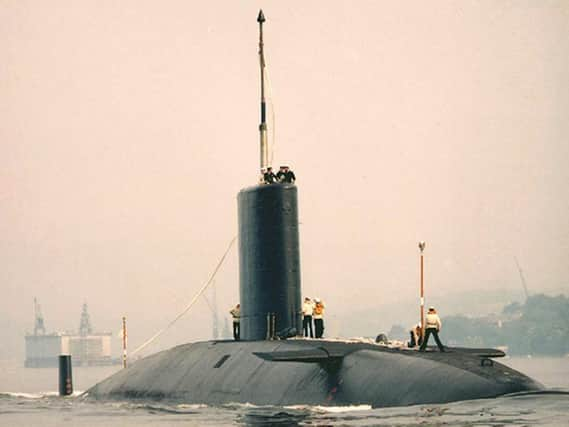

Whatever it is, one thing is for sure.
"Working on a submarine is unique," says Jerry Anderson. "Put it this way: I did 32 years in the Navy and only four of those were on a submarine, but people are only ever interested in my time on the submarine."
From a young age, Jerry dreamed of being in the Royal Navy. Born and raised in Bicester near Oxford, he was spurred on by a powerful sense of wanderlust and curiosity. "I made my mind up to join the Royal Navy when I was probably about 12 or 13," he explains. "Basically, I wanted to get away from my hometown. I wanted to travel and to see the world."
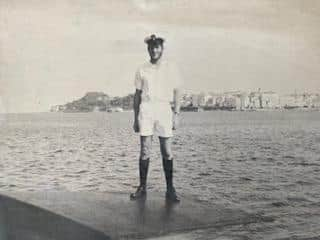

Advertisement
Hide AdAdvertisement
Hide AdHelpfully, the Navy also offered Jerry that other most crucial of life's many facets: a career. And a good one at that. So, at the age of 16, the boy who had dreamed of the sea joined the Royal Navy as an Artificer Apprentice.
"The Navy offered an excellent apprenticeship, good training, and the prospect of a good job," says Jerry, who went on to complete a five-year apprenticeship before becoming a Petty Officer at 22. "We were privileged because, provided you passed your exams and worked hard, you had a good chance of promotion: I was made Chief Petty Officer at 24.
"Non-technician sailors who were good and lucky might make that rank by 30, so we Artificers were privileged and I've always acknowledged that," he adds. "But it was hard graft. I enjoyed the Navy from the very start."
After serving at HMS Fisgard and HMS Collingwood, Royal Navy shore establishments used to train Artificers, and on HMS Charybdis, a Leander-class frigate, Jerry was drafted to work on HMS Courageous between 1975 and 1979. A nuclear-powered submarine, HMS Courageous would see Jerry take to life below the waves, rather than above them.
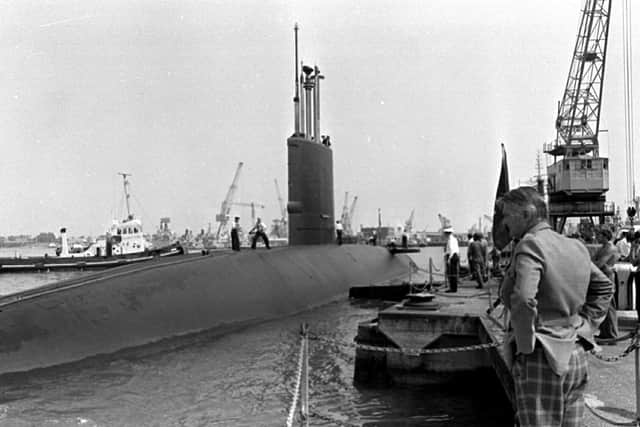

Advertisement
Hide AdAdvertisement
Hide Ad"There used to be a fallacy that all submariners were volunteers but, in my day, what happened was that, like many people, I got drafted in as a young Petty Officer just after finishing my apprenticeship," says Jerry. "I didn't particularly want to go on a submarine, but I was happy once I got in because submariners are very professional and there was a great esprit de corps.
"Something which I think would surprise people about submarines is the relative informality," he adds. "Because everybody's down there working towards the same goal, there's not the shouting and snapping to attention that there is in, say, the Army. It was a different sort of discipline which relied on everybody doing their job and teamwork.
"That collaboration is essential."
Built by Vickers (Shipbuilding) Limited at Barrow-in-Furness, HMS Courageous was a 285ft-long, 4,300-ton Churchill-class nuclear fleet submarine in service with the Royal Navy from 1971. It was also, in the naval tradition, affiliated with the city of Preston.
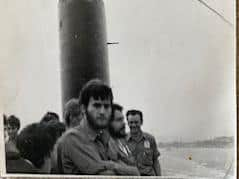

A nuclear vessel, the boat's nuclear reactor was about the size of a household dustbin but nevertheless provided a virtually limitless power supply who drove both the propulsion mechanisms and the boat's life-support systems onboard.
Advertisement
Hide AdAdvertisement
Hide Ad"Submariners work hard and play hard and I've got a lot of admiration for them to this day," explains Jerry. "When I first set foot on Courageous it was exciting. I was interested. Courageous was a nuclear-powered submarine with conventional torpedoes and we were what was known as a hunter/killer.
"It was the height of the Cold War and we basically went around looking for Russians," he adds. "That's what it was all about - showing a presence and intelligence-gathering."
During her lifespan, Courageous travelled the world over, visiting ports in places as far and wide as San Diego, Charleston, San Francisco, Curacao, Liverpool, Hull, Bremerhaven, Bermuda, Haifa (thus likely becoming the only foreign nuclear submarine ever to visit Israel), Corfu, Naples, La Maddalena, and Gibraltar.
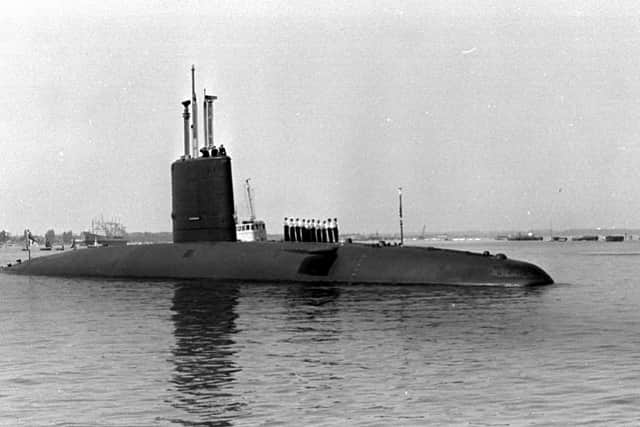

In 1982 - just three years after Jerry had finished serving on board - she was sent with the British task force to retake the Falkland Islands from the occupying Argentine forces alongside HMS Conqueror, which famously sank the Argentinian battle cruiser Belgrano in combat.
And life as a submariner was, as Jerry says, truly unique.
Advertisement
Hide AdAdvertisement
Hide Ad"We did a six-week training course on the submarine's systems because, in an emergency, everybody had to be able to do certain things regardless of your job," he says. "We were well-drilled. My job was to maintain the radio, the radar, and the electronic warfare equipment, but I also worked on the aft hydraplains to control the angle of the submarine and its depth.
"And Courageous was... I wouldn't say spacious, but it wasn't as cramped as some of the Second World War diesel submarines," he adds. "Still not great if you had claustrophobia! When you joined you slept above the torpedoes in the fore-ends. Once you had fully qualified and became a full member of the crew, you slept in three-tiered bunks which were only about six-foot long.
"I'm 6'2", so it was all very cosy.
"There was a curtain for privacy, a little bunk light, and you'd sleep in a sleeping bag, so there wasn't a lot of personal space," continues Jerry. "The only one who had his own cabin was the captain, and even that wasn't that luxurious. You just had to live with the confinement and you got used to it.
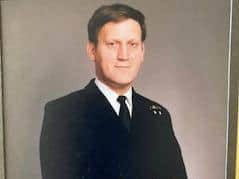

"If you did visit a foreign port and if you weren't on duty, submariners were allowed to go and stay in a hotel, which didn't happen for people on Navy ships. That was a bit of a perk."
Advertisement
Hide AdAdvertisement
Hide AdAt the other end of the situational spectrum to a few nights in a coastal hotel whilst on shore-leave, however, was the all-too-real prospect of months underwater. And, while HMS Courageous did plenty of shorter, two-week stints under the waves, periods of being submerged for up to a couple of months were common.
"Being without things like sunlight and fresh air was like being indoors all the time, but only with no windows," Jerry explains, trying to put into words a concept alien to most of us. "Then, when we'd resurface and open the hatches for the officers, you'd smell the fresh air. After a while, things like sunlight and fresh air became almost a little bit strange. But nice. Really nice.
"During the summer of '76 - that very hot summer - I was in Gibraltar for a patrol around the Med," he adds. "I missed most of the hottest summer ever because I was on a submarine!"
But life under the sea wasn't sustainable.
"I enjoyed the work on Courageous, but I didn't want to stay for a couple of reasons," Jerry says. "First, I wanted to become an officer and, because I have a lazy eye, I would never be able to do that on a submarine because an officer had to use the periscope, which my eyesight wasn't up to.
Advertisement
Hide AdAdvertisement
Hide Ad"Secondly, I wanted to see more of the world and, on submarines, you don't tend to do much of that!" he adds with a laugh. "I travelled underwater to a lot of different places, but you don't tend to visit many actual places! When I left Courageous, my reaction was mixed because, while I was sad to leave my companions, I was looking forward to my future career.
"I actually got married whilst I was serving on HMS Courageous," he continues. "The submarine was in refit in Chatham and, on my stag night in 1977, I had a few too many drinks and invited every man and his dog to my wedding up in Bradford. When I arrived at the church, there were about eight sailors there who I didn't know were coming!
"I never missed the submarine and being underwater, I missed the friends I made."
After leaving Courageous, Jerry went on to serve on three frigates including HMS Dido (affiliated to Bolton) and HMS Active (affiliated to Burnley). All-in-all, his naval service spanned 32 years from 1968 to 2000, when he finally retired from the Royal Navy as a Lieutenant Commander.
Advertisement
Hide AdAdvertisement
Hide AdAs for Courageous, she was retired from service in 1992 and is now a museum ship at Devonport Dockyard in Plymouth.
"I left Courageous 42 years ago, so there's been a whole generation since then - the current Commanding Officers would not have even been born," says Jerry, now 69 and living in Nidderdale, on modern submariners. "And things have changed so much since I worked on HMS Courageous, one being that they now have women at sea and on submarines.
"There was never any thought of a woman going on a submarine back in those days, whereas now the forces are open to everyone, including openly gay people, which I've got no problem with at all," he adds. "I actually visited Courageous in Devonport about five years ago. That was really spooky after all that time. But it was interesting.
"They'd taken all the vertical ladders out because you couldn't have people flying down them due to health and safety, but it was great to see it again."
Advertisement
Hide AdAdvertisement
Hide AdJerry's interest was also piqued recently by the new BBC crime drama Vigil, which is set on a Trident submarine. No spoilers, but safe to say he is less than impressed.
"From what I've seen, it's just unrealistic," he says. "I'll sum Vigil up in one word: cringeworthy."